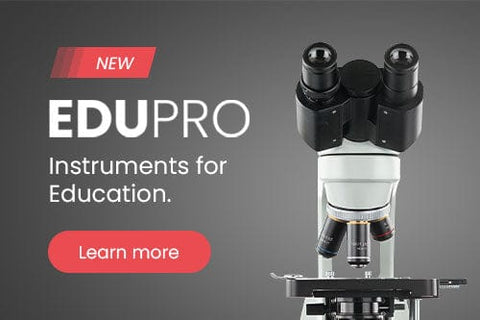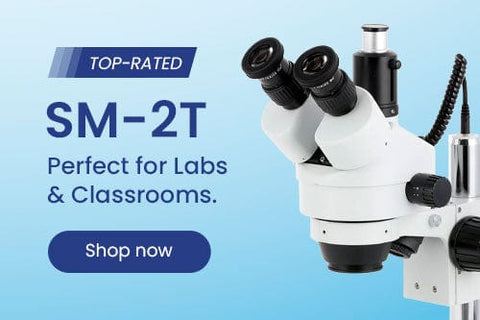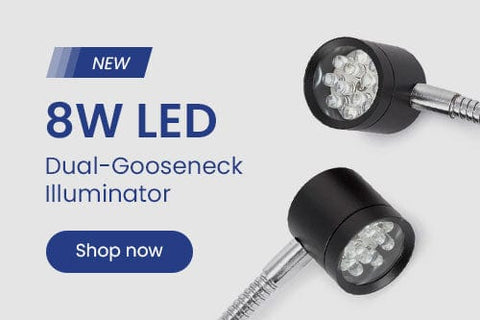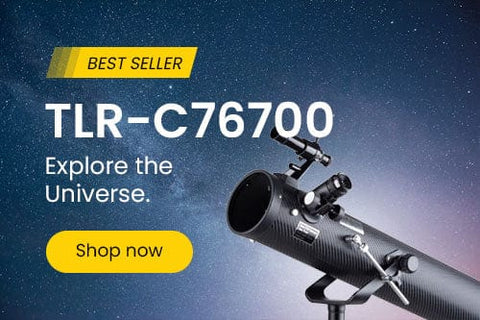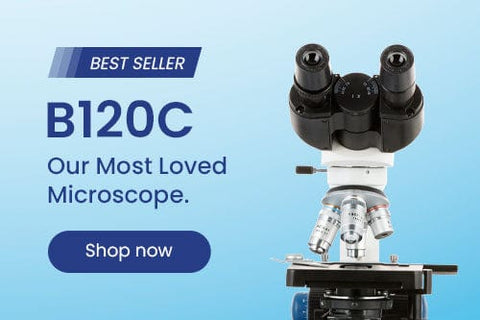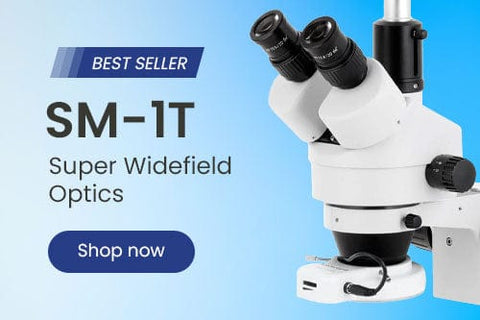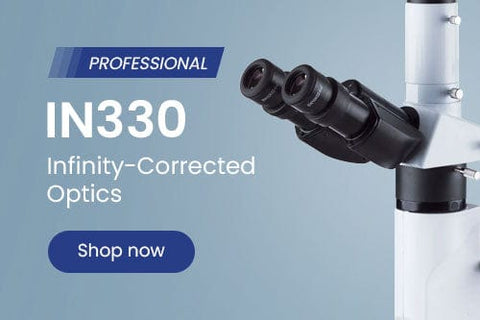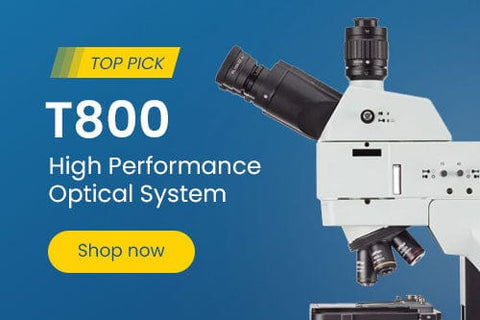- Microscopes
- Cameras
- Lab Supplies & Equipment
- Shop By Brand
- Lab Supplies by Category
- Analyzer Consumables
- Balances
- Bags
- Beakers
- Bench Scale Bases
- Bottles
- Bottletop Burettes
- Bottletop Dispensers
- Boxes
- Blank Microscope Slides & Cover Slips
- Blood Collection
- Caps
- Carboys
- Centrifuges
- Centrifuge Tubes
- Cold Storage
- Containers
- Cryogenic Vials
- Culture Tubes
- Cylinders
- Dispensers
- Digital Dry-Baths
- ESR Products
- False Bottom Tubes
- Flat Bottom
- Funnels
- Gel Documentation
- Glassware
- Glass Test Tubes
- Histology
- Homogenizers
- Hotplates-Stirrers
- Inoculation Loops and Spreaders
- Liquid Handling Products
- Manual-Electronic Pipettors-Pipettes
- Microscope Slides
- Overhead Stirrers
- Pipette Controller (Serological Filller)
- Pipette Tips
- Plastic Test Tubes
- PCR Tubes, Strips & Plates
- Racks
- Repeater Pipettor
- Rockers
- Rotary Evaporators
- Serological Pipettes
- Shakers
- Spectrophotometers
- Syringe Tips
- Sample Tubes
- School/Classroom Supplies
- Screwcap Test Tubes
- Self-Standing
- Test Tube Racks
- Test Tubes & Vials
- Transport & Storage Tubes
- Thermal Mixers
- Transfer Pipets
- Urinalysis
- Vacuum Pumps
- Weighing Dishes
- Lab Equipment
- Balances
- Bench Scale Bases
- Centrifuges
- Digital Dry-Baths
- Gel Documentation
- Homogenizers
- Hotplates-Stirrers
- Overhead Stirrers
- Pipettors
- Rockers
- Rotary Evaporators
- Shakers
- Serological Pipettes
- Spectrophotometers
- Thermal Mixers
- Vacuum Pumps
- Liquid Handling Products
- Manual-Electronic Pipettors-Pipettes
- Pipette Tips
- Racks
- Pipette Fillers-Controllers
- Repeater Pipettor
- Syringe Tips
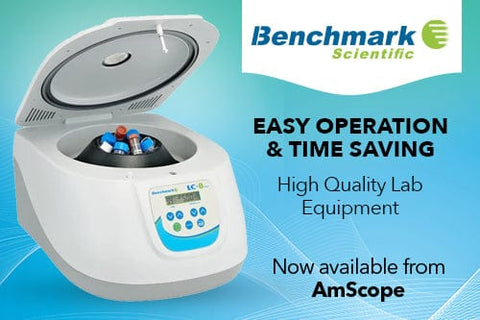
Cost effective products and solutions designed to improve laboratory efficiency, safety and results.
SHOP BENCHMARK SCIENTIFIC >
- Slides & Accessories
- Slides
- Cameras
- Illuminators
- Adapters
- Eyepieces / Objectives
- Bulbs
- Magnifying Lamps
- Monitors and Tablets
- View All Categories
- Adapters
- DSLR Adapters
- USB Camera Adapters
- Ring Light Adapters
- Power Adapters
- Barlow Lens
- Books & Experiments Cards
- Bags & Cases
- Bags
- Cases
- Cameras
- Circuit Board Holders
- Cleaning Kits
- Condensers
- Darkfield
- Phase Contrast Kits
- Polarizing Kits
- Dust Covers
- Eye-Guards
- Eyepieces
- 20mm
- 23mm
- 30mm
- 30.5mm
- Filters
- Microscope Filters
- Illuminator Filters
- Fluorescence Kits
- Conversion Kits
- Filter Cubes
- Focusing Racks
- Fuses
- Illuminators
- Bulbs
- LED Illuminators
- Fiber Optic Illuminators
- Fluorescent Illuminators
- Ring Lights
- Stand Lights
- Goosenecks
- Gooseneck Attachments
- Immersion Oils
- Loupes
- Magnifying Lamps
- Clamp Lamps
- Desktop Lamps
- Rolling Stand Lamps
- Mechanical Stages
- Monitors and Tablets
- Calibration Slides & Stage Micrometers
- Stage Warmers
- Stain Kits
- Stands
- Articulating Arm Stands
- Boom Stands
- Table Stands
- Tweezers
- Other Accessories
- Shop By Industry
- Shop By Industry
- Botany
- Agronomy & Forestry
- Horticulture
- Phytopathology
- Chemistry
- Biochemistry
- Biotechnology
- Cannabis
- Pharmaceutics
- Consumables
- Beer & Wine
- Cosmetics
- Food & Beverage
- Electronics
- Circuit Boards & General Electronics
- Mobile Phone Repair
- Semiconductors & Wafers
- Environmental
- Asbestos
- Ecosystem Research
- Mud Logging
- Soil Treatment
- Water Treatment
- Forensics
- Ballistics
- Fingerprint Analysis
- Genetic Identification
- Hair & Fiber Analysis
- Handwriting Analysis
- Industrial
- Aerospace
- Automotive
- Dental Lab & Production
- Glass Industry
- Industrial Inspection
- Mechanical Parts
- Paper Industry
- Petrochemical
- Plastics
- Printing Industry
- Quality Assurance & Failure Analysis
- Textiles & Fibers
- Tool Making
- Wood Production
- Jewelry & Gemology
- Engraving
- Gemology
- Jewelry Repair
- Stone Setting
- Watch Repair
- Hobby
- Coins & Collecting
- Stamps
- Modeling & Assembly
- Sculpting
- Repair
- Telescopes
- Metallurgy
- Archaeology
- Geology
- Mining
- Petrology
- Medical & Microbiology
- Anatomopathology
- Bacteriology
- Biochemistry
- Cell Culture
- Cytology
- Dental Microbiology
- Dermatology
- Dissection
- Gout & Rheumatology
- Hair & Fiber Analysis
- Hair Transplant
- Fluorescence
- Hematology & Live Blood Analysis
- Histopathology
- Mycology
- Medical Devices
- Microsurgery
- Neuropathology
- Oncology
- Parasitology
- Pathology
- Semen Analysis
- Virology
- Veterinary & Zoology
- Breeding & Semen Analysis
- Entomology
- Fecal Smears & Floats
- Marine Biology
- Ornithology
- Veterinary Medicine
- Zoology
- Shop By Industry
- Students
- Telescopes
- Buy With Prime
- Sale
- Compound Microscopes
- Shop By Brand
- AmScope
- Euromex
- Omax
- Shop by Head Type
- Binocular
- Monocular
- Trinocular
- Multi-head & Training
- Shop By Specialty
- Brightfield
- Darkfield
- Phase Contrast
- Inverted
- EPIfluorescence
- Polarizing
- Digital Integrated
- Metallurgical
- Shop By Application
- Education
- Research
- Veterinary
- Compound With Digital Head
- Shop Best Sellers
- Shop All Compound
- Stereo Microscopes
- Shop By Brand
- AmScope
- Euromex
- Shop By Objective Type
- Fixed Power
- Zoom Power
- Single Lens
- Common Main Objective
- Shop By Stand Type
- Articulating Arms
- Boom Stands
- Gooseneck Stands
- Table Stands
- Other Stands
- Shop By Head Type
- Binocular
- Monocular
- Trinocular
- Simul-Focal
- Shop By Industry
- Video Inspection
- Industrial Inspection
- Microscope Heads
- Shop Stands
- Articulating Arm
- Boom Stands
- Table Stands
- Stereo With Digital Head
- Shop Best Sellers
- Shop All Stereo
- Specialized Microscopes
- Digital Microscopes
- Kids, Student Microscopes
| Amscope Team
Refractor Telescope vs Reflector Telescope: Which Is Right for You?

Thanks to news channels and social media posts, many people regularly view dazzling images of celestial events. Whether seen through photographs or in person, comets, meteor showers, and solar eclipses inspire awe and wonder in viewers. Even more mundane orbs like the moon can thrill stargazers during visually spectacular phases like the harvest moon or a total lunar eclipse.
While you can see some of these events with your naked eye, a quality telescope provides a much richer view of the night sky. If you’re interested in upgrading your stargazing experience, a telescope can help you make new discoveries.
There are two popular kinds of telescopes available today. A refractor telescope has a large lens on the front of the tube, making this tool most suitable for viewing deep space. By contrast, a reflector telescope has an inbuilt mirror at the end of the tube, which allows for easy observation of planets. Read on to learn more about reflector vs. refractor telescopes and find the best instrument for all of your stargazing needs.
Choosing a Refractor Telescope vs Reflector Telescope
Both refractor and reflector telescopes will give you stunning nighttime views. However, the two types of telescopes have different designs, purposes, and pros and cons. Depending on your budget and interests, you may prefer one instrument over the other.
About Refractor Telescopes
Refractor telescopes have a long history. In 1608, the Dutch optician Hans Lippershey invented this instrument. The following year, Galielo refined the refractor and used it to discover Jupiter’s four moons, revolutionizing our understanding of space.
If you’ve seen telescopes in films or television shows, you’re probably already familiar with the design of the refractor. This popular telescope has three main components: a large objective lens at the front, a long metallic tube for the body, and a smaller eyepiece at the back.
When you use the telescope to gaze at the sky, the front aperture gathers rays of light from distant objects like planets and stars. The lens transmits these rays through the tube to the eyepiece lens at an angle, magnifying the image for the human eye. This design makes the refractor the best tool for looking at a deep sky object, such as a galaxy or a nebula.
Larger front apertures gather more light, delivering brighter and clearer images. However, it can be impractical and expensive to create very large glass lenses. Most quality refractor telescopes have an aperture of 100 mm or less. The typical focal length, or the distance that the light travels from entry to exit, ranges from 600 mm for basic models to 2,000 mm for higher-end telescopes.
Understanding Chromatic Aberrations
When you look through a refracting telescope, you may notice that the colors seem distorted and fringed. This phenomenon is known as chromatic aberration, and it occurs when the two lenses at each end of the telescope bend light at different wavelengths.
You can reduce chromatic aberration by using an apochromatic refractor. This model uses three lenses with different frequencies to cancel out the blurring and glow caused by chromatic aberration.
Pros and Cons
A refractor telescope has several advantages and disadvantages. Weighing these pros and cons can help you determine if this instrument is right for you.
Pros of a refractor telescope:
- Displays images right-side up
- Lightweight and portable
- Low-maintenance lenses that don’t require frequent cleaning
- Simple design
- Sturdy lenses that don’t easily slip out of alignment
- Suitable for astronomy beginners and children
- Wider field of view than a reflector
Cons of this instrument:
- Chromatic aberration can distort your view
- Long tube takes up a lot of storage space
- More expensive than comparably sized reflecting telescopes
- Refractors with large apertures can be heavy and hard to move
About Reflector Telescopes
A reflector telescope uses a curved mirror instead of a lens to gather and transmit light. This instrument is often more affordable than a refractor telescope because manufacturers can produce mirrors more easily than lenses. Reflectors work best for looking at faint objects and planets.
The Newtonian telescope is the most popular reflector for hobbyists. Named after inventor Sir Isaac Newton, this model has a curved mirror on the end and a smaller flat mirror near the eyepiece. Other styles may have a third mirror or a convex secondary mirror.
The reflector is the most common telescope found in observatories. For example, the Hubble Space Telescope is a Cassegrain reflector telescope. This design transmits light through a concave primary mirror and a convex secondary mirror.
Understanding the Primary Mirror and Secondary Mirror
Most reflector telescopes, like Newtonian reflectors, use two mirrors: a large primary mirror at the front end of the telescope and a smaller secondary mirror close to the viewer’s eyepiece.
Light enters the top of the telescope and travels down the top of the tube to the primary mirror. This surface gathers the light and bounces it back up the optical path to the secondary mirror, which reflects the image into an eyepiece located on the side of the telescope.
Due to this design, the image that you see will be upside down, though this usually doesn’t detract from the viewing experience.
Pros and Cons
This instrument has a few benefits and disadvantages that may influence your decision-making process when you compare a reflector vs refractor telescope.
Pros of a reflector telescope:
- Good for viewing distant objects
- No chromatic aberration
- Significantly less expensive than a comparable retractor
Cons of a reflector:
- Large models can be heavy and difficult to transport
- Mirrors need to be cleaned frequently
- Requires regular collimation, or alignment
- Spherical distortion of objects due to the telescope’s design
Refractor vs Reflector Telescope: Which Is Better?
Both refractor and reflector telescopes can be good entry-level choices, and AmScope offers affordable models of each for under $300. If you want a low-maintenance and sturdy telescope that can provide sharp images of deep space, a refractor may be best for you. If you want to view planets without worrying about chromatic aberration, then a reflector will suit your needs well.
Alternatively, you can opt for a catadioptric telescope, which blends the best aspects of refractors and reflectors. This third option combines lenses and mirrors to create sharp images. However, a catadioptric telescope can be heavier and pricier than the other two versions.
If you’re ready to launch your stargazing hobby, visit AmScope today to view our selection of high-quality refractor and reflector telescopes. And once you’ve ordered your new instrument, check out our top tips for getting the most out of your stargazing experiences.Free Shipping on orders $149+
Same day shipping for orders within the contiguous U.S.
Easy Returns
Hassle-free 30-day return policy. 100% satisfaction guarantee.
Quality Products
5-year warranty on AmScope microscopes.
Got a question?
Speak to our team of experts and find the products you need.






